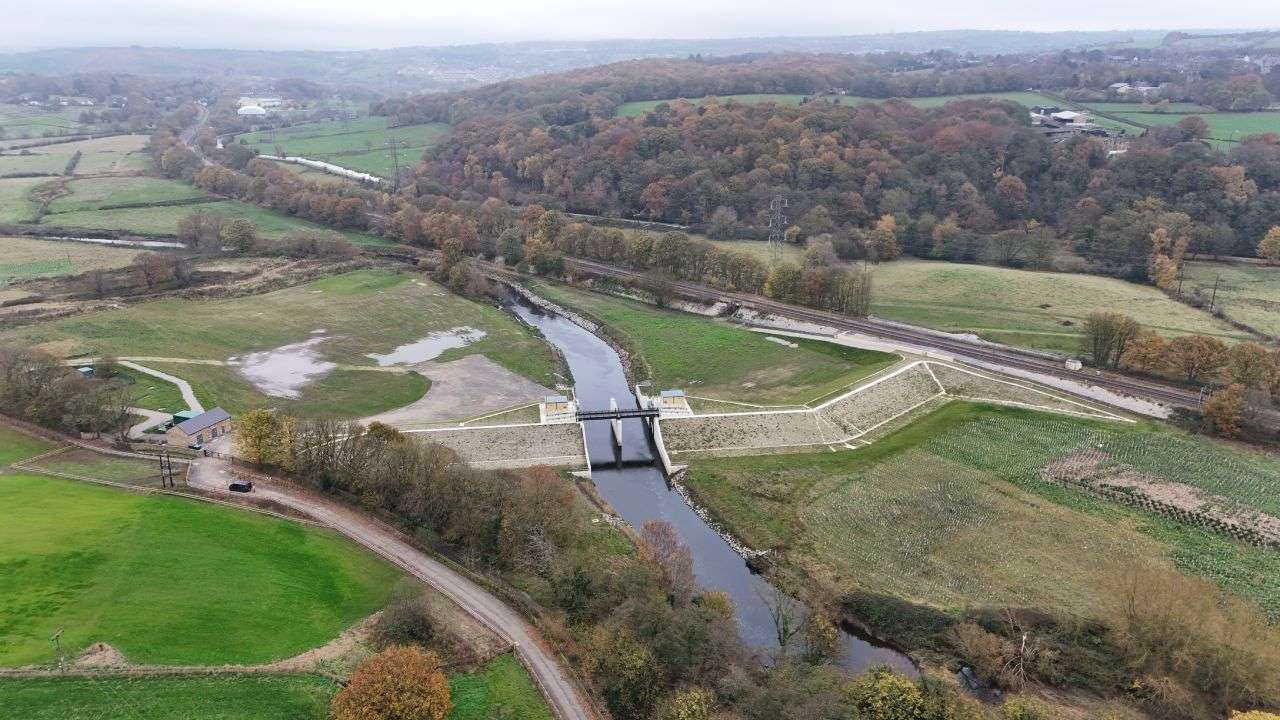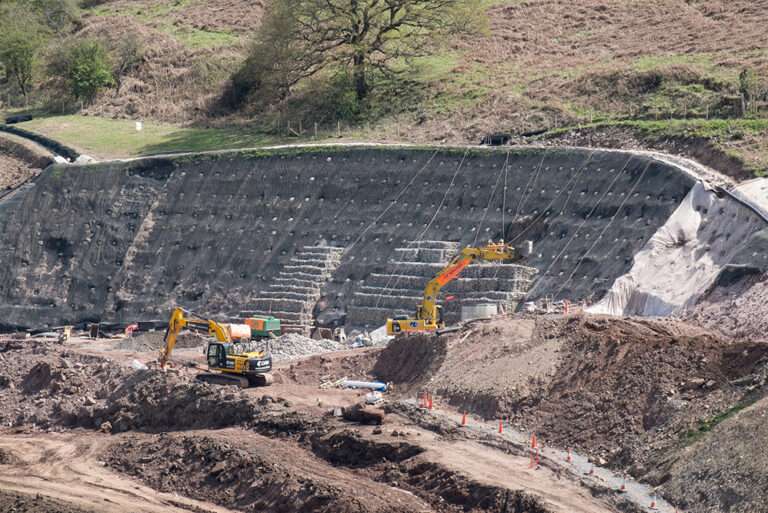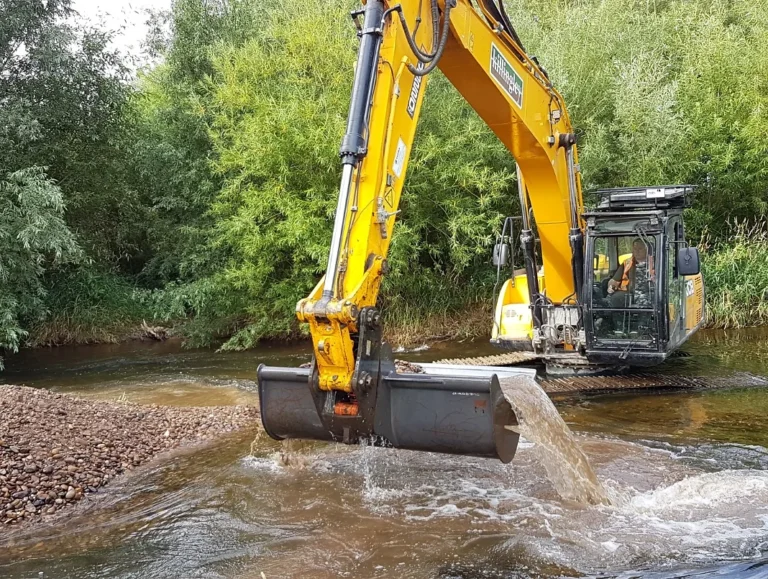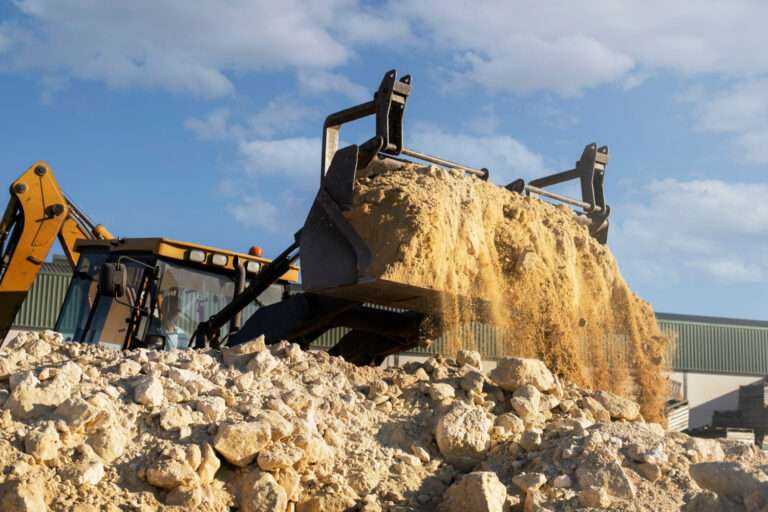Smart Flood Alleviation Strategies for Commercial Properties
Flooding is one of the most pressing risks for commercial property owners across the UK. Whether you manage offices, retail outlets, warehouses, or industrial estates, flood damage can cause devastating disruption. From costly repairs and insurance claims to reputational harm and interrupted operations, the stakes are high.
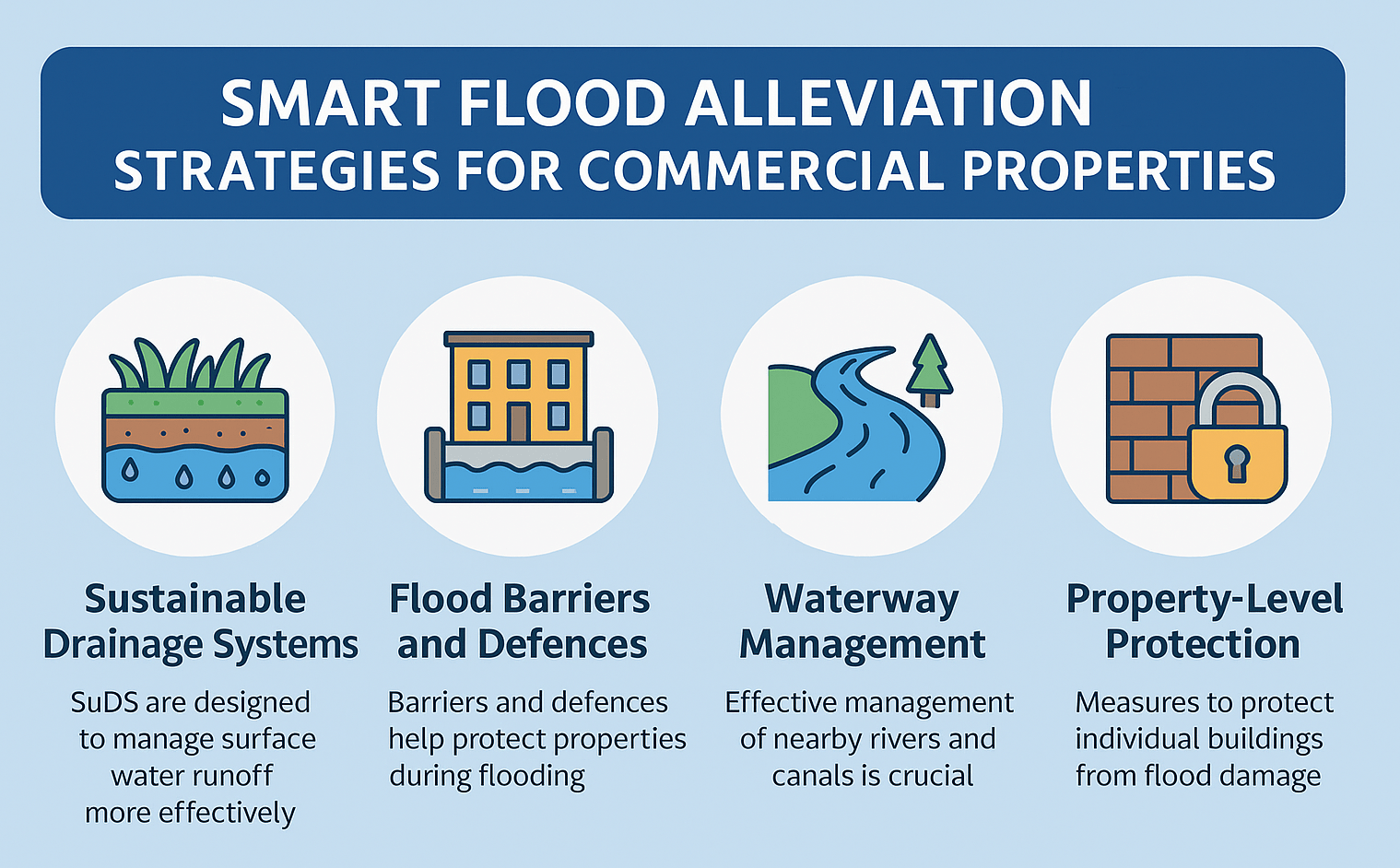
The good news is that practical and proven flood alleviation measures are available to protect your business and ensure long-term resilience. In this article, we explore why flood prevention matters, how to assess your risks, and the strategies that make a real difference.
Why Flood Alleviation Matters for Businesses
Commercial properties are particularly vulnerable to flooding because of their size, location, and the value of the assets they contain. Even a few inches of water can result in:
- Lost stock and equipment
- Temporary or permanent closure
- Expensive insurance premiums
- Staff displacement and productivity loss
- Legal liabilities from health and safety breaches
💡 Did you know? The average cost of flood damage to a business in the UK can exceed £80,000 — not including indirect losses such as reputational damage.
Taking proactive flood alleviation steps is therefore not just about compliance or peace of mind — it’s about protecting your bottom line.
Key Causes of Flooding Near Commercial Properties
Before diving into solutions, it’s essential to understand what leads to flooding in and around business premises:
🌧️ Surface water runoff – Heavy rainfall overwhelming drains.
🏗️ Urban development – Increased impermeable surfaces such as tarmac and concrete.
🌊 Rivers and waterways – Rising river levels leading to overflow.
💧 Groundwater – High water tables causing seepage into basements.
🔧 Drainage failure – Blocked, undersized, or poorly maintained drainage networks.
By identifying which risks are most relevant to your property, you can adopt tailored solutions rather than generic ones.
Effective Flood Alleviation Strategies
Here are the most impactful strategies UK businesses can adopt to reduce flood risks:
🌱 Sustainable Drainage Systems (SuDS)
SuDS are designed to slow down and control surface water runoff. They mimic natural processes by allowing water to infiltrate, evaporate, or be stored. Popular SuDS features include:
- Permeable paving
- Swales and soakaways
- Green roofs
- Rain gardens
These solutions not only reduce flood risks but also enhance biodiversity and improve the appearance of commercial landscapes.
🛡️ Flood Barriers and Defences
Installing physical barriers is one of the most immediate protective measures:
- Demountable flood barriers for entrances and loading bays
- Flood gates for car parks and access routes
- Raised kerbs and bunds to divert surface water away
These systems can be deployed quickly and provide strong front-line defence during extreme weather events.
🌊 Waterway Management
Commercial properties located near rivers or canals require dedicated management strategies. These include:
- Regular dredging of channels
- Strengthening embankments
- Wetland creation for natural water storage
For large-scale projects, professional support is vital. Specialist contractors such as Flood Alleviation & Waterway Management ensure solutions are both compliant and sustainable.
🏢 Property-Level Protection
Even if large-scale defences are in place, securing the building itself is essential:
- Installing non-return valves on drains
- Raising electrical sockets and equipment above flood levels
- Using flood-resistant materials (e.g. concrete floors instead of wood)
- Sealing basements and low-lying storage areas
These measures reduce downtime and make clean-up significantly easier.
📊 Regular Drainage Maintenance
Routine inspections and proactive care can prevent small issues escalating into major floods:
| Maintenance Task | Benefit |
|---|---|
| Gully cleaning | Prevents blockages during heavy rain |
| CCTV drain surveys | Detects cracks or collapsed sections early |
| Jetting and flushing | Keeps pipes flowing at full capacity |
| Vegetation control | Stops roots damaging pipes and culverts |
Neglecting maintenance often leads to avoidable emergencies.
Frequently Asked Questions
1. Do commercial landlords have a legal duty to manage flood risk?
Yes. Property owners are responsible for ensuring their premises are safe for tenants and staff. This includes considering flood resilience.
2. How do I know if my commercial site is at risk?
Check the Environment Agency’s flood risk maps, but also commission a site-specific flood risk assessment for accurate insight.
3. Are flood alleviation measures expensive?
Costs vary depending on scale, but many solutions (like SuDS or non-return valves) are highly cost-effective compared with potential damages.
4. Will flood protection reduce my insurance premiums?
In many cases, insurers reward proactive measures with reduced premiums or improved terms. Always notify your provider of new flood defences.
Creating a Flood Resilient Future for Your Business
Flooding is a real and growing risk for UK businesses. However, with foresight, planning, and the right investments, commercial property owners can significantly reduce disruption and protect their assets.
Whether it’s sustainable drainage systems, physical barriers, or robust maintenance schedules, every step adds resilience. Partnering with experts in waterway and flood management ensures you not only protect your property but also contribute to wider community safety.
🌍 The time to act is now. Don’t wait until your business is knee-deep in water — invest in flood alleviation today and secure peace of mind for the future.
Killingley Insights is the editorial voice of NT Killingley Ltd, drawing on decades of experience in landscaping, environmental enhancements, and civil engineering projects across the UK.


